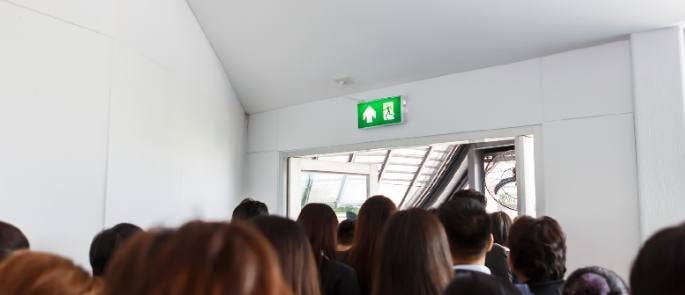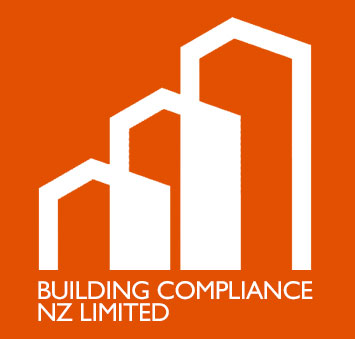
Fire drills are important because they:
- Remind employees or familiarise new employees with the sound of the alarm, the location of emergency routes and the assembly point, and any additional fire safety procedures.
- Identify any areas where the alarm is not clear or if emergency communication systems are insufficient.
- Ensure that all emergency routes are free from obstructions and are effective in practice.
- Test arrangements for people with disabilities.
- Assess the speed and efficiency of evacuation procedures.
- Ensure compliance with the statutory requirement to carry out fire safety drills.
In the event of serious and imminent danger, it’s vital that everyone knows what to do and where to go. People’s lives are at stake.
Fire Drill Procedure
The aim of a drill is to determine what works in practice and where improvements are necessary. So in preparation for your fire drill, you should have a plan in place that details what needs to be done to facilitate an effective drill and what to look out for.
Before you start a fire drill, be sure to:
- Co-ordinate with any other occupants of the building. They need to be aware of what’s going on so they can decide whether or not they want to participate (they might prefer to carry out their drill at a different time).
- Check the condition of fire exit routes. Are stairs free of obstacles and damage? You don’t want to put people at unnecessary risk during the drill. Plus it’s a good opportunity to clear the route.
- Consider the weather. Postpone the drill to another day if conditions are unfavourable and could present avoidable hazards. For example: wet weather could make stairs a slip hazard.
- Consider any equipment or plant that automatically shuts down during an alarm. Will there be someone available to reset them after the drill?
- Notify the fire brigade. If your alarm systems automatically notify the fire brigade to respond, be sure you disable this or inform them that you’re carrying out a drill.

How to Conduct a Fire Drill
Unlike a real fire, the evacuation process during a drill is more systematic: your focus is on locating any issues with the fire exit routes and evacuation process. This involves stopping to assess as many aspects as possible during the drill.
To carry out a fire drill you should:
- Decide whether you’ll pre-announce the drill or if everyone will be notified beforehand. It’s generally recommended that you do not pre-announce drills. It eliminates a sense of urgency and may result in staff exiting through normal entrances rather than escape routes. However, to prevent panic, you may want to announce to members of the public on your premises that the alarm is only a drill.
- Ask a random member of staff to set off the alarm. This tests how quickly they’re able to identify the nearest alarm call points.
- Lead staff on different routes. Instruct fire wardens to take certain staff on certain routes. This ensures they are all tested and that staff are familiar with routes they may not normally use.
- Ensure fire wardens practice carrying out their duties, e.g. closing windows and fire doors, checking isolated areas, assisting people, etc.
- Carry out a roll call at the assembly point. If anyone is unaccounted for, find out why. It could be they didn’t hear the alarm, they stopped to collect belongings when they shouldn’t have, or they took a slower route.
- Get feedback from fire wardens and employees (and members of the public if they were present). Ask if anyone came across issues with the evacuation procedure, e.g. blocked pathways, doors not automatically releasing, areas of the building where the alarm was too quiet, etc.

Fire Evacuation Drill Checklist
When carrying out the drill, areas in particular to assess are:
- How long does it take everyone to evacuate the building? Can you improve this time? Which routes were the quickest? Can you improve the slower ones at all?
- Can you hear the alarm from every location? This includes meeting rooms, toilets, storage rooms, and any other isolated areas. Fire wardens should go to these areas during the drill to check.
- Recent alterations or changes to the route or work activities. For example, have machinery or vehicles been introduced into work processes? How swiftly can staff safely stop what they’re doing and reach an escape route? Is any maintenance in the building temporarily blocking a route?
- Are routes for people with disabilities effective? Are people with reduced mobility able to exit the building as swiftly as possible? Would receiving assistance from someone aid their exit? (People with disabilities or other aspects that may affect their safety should have a Personal Emergency Evacuation Plan).

How Often Should Fire Drills Be Conducted?
You must carry out fire drills at least once a year.
You should carry them out more regularly if:
- Several members of staff have started since your last drill.
- Work activities change in such a way that certain employees’ evacuation may be delayed.
- The fire evacuation routes change.
If your workplace involves shift work, e.g. retail or bar work, not everyone will be present during the drill. Carry out more than one around the same time to ensure everyone participates in at least one fire drill a year.
If your workplace is particularly high risk, e.g. work with flammable substances, consider carrying out drills more regularly, e.g. one every few months.

Record the results of a fire safety drill in a Fire Log Book.
When you record your fire safety drill, you should include:
- The name and signature of the person in charge of the drill.
- The date of the fire drill.
- The time it took to evacuate all employees.
- Any observations, such as obstacles or difficulties hearing the alarm.
Notify staff immediately, e.g. via email, if you amend evacuation procedures at all. Also send them an updated copy of the fire evacuation plan.
Always respond to any feedback and correct any errors identified in the fire evacuation process and routes as soon as possible. This is vital for protecting people from the devastating effects of fire should the worst happen in your workplace.

